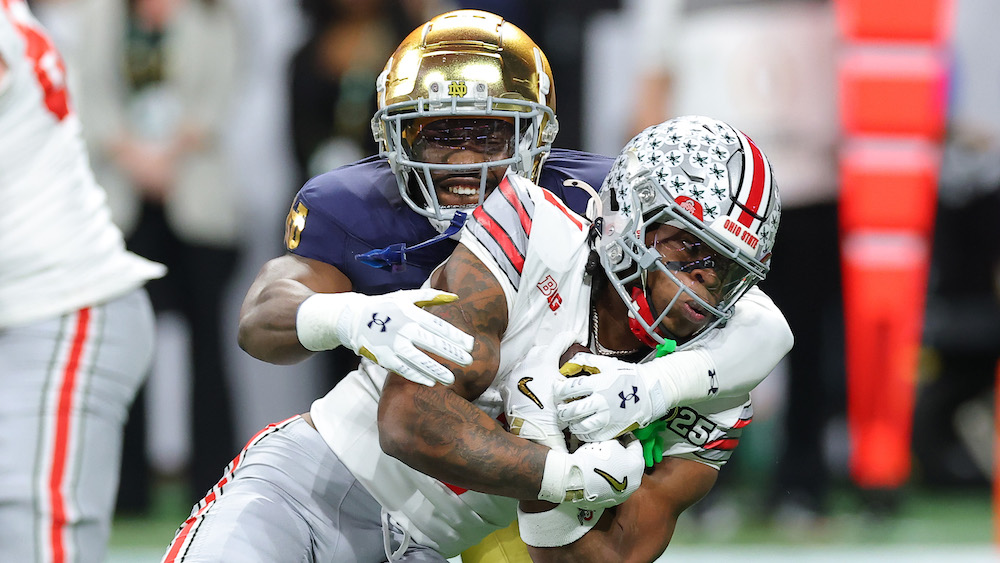Ohio State Clinches National Championship: A Closer Look at Viewer Trends
Ohio State’s recent triumph over Notre Dame marked a significant milestone, not only securing them the coveted national championship but also drawing in an impressive 22 million viewers. However, this figure represents a 9% decline compared to last year’s championship game. As we delve deeper into this phenomenon, it becomes evident that various factors influenced viewer engagement and the broader implications for the future of college football broadcasts.
Understanding Viewer Engagement in College Football
Viewer engagement is a dynamic metric influenced by numerous factors, particularly in the realm of college football. The decline in viewership can be attributed to a combination of elements ranging from changing viewing habits to the impact of emerging technologies and competition from other entertainment options.
- Changing Viewing Habits: The way audiences consume sports content has evolved dramatically. With the rise of streaming services and on-demand viewing, many fans are opting for more flexible viewing options instead of traditional live broadcasts.
- Competitive Entertainment Landscape: Viewers now have a multitude of options for entertainment, including streaming series, movies, and other sports events. The competition for viewers’ attention is fierce, and college football must continually adapt to retain its audience.
- Time Zone Challenges: The scheduling of games can also impact viewership. For example, a game that starts late in the evening may deter fans, particularly those residing in different time zones.
The Role of Social Media and Digital Engagement
Social media plays a pivotal role in shaping viewer engagement. Platforms like Twitter, Facebook, and Instagram offer fans a space to interact, share opinions, and engage with content in real-time. Ohio State’s victory generated significant buzz across these platforms, showcasing the potential for digital engagement to enhance the overall viewing experience.
However, it’s important to note that while social media can drive excitement, it may also fragment attention. Fans might find themselves distracted by various online interactions, leading to a decrease in the number of viewers tuning in for the live broadcast.
Marketing and Promotion Strategies
The effectiveness of marketing and promotion strategies can significantly influence viewer numbers. In the case of the Ohio State vs. Notre Dame championship game, promotional efforts played a crucial role in attracting viewers. While the game was well-publicized, the marketing approach may not have resonated as strongly with potential viewers compared to previous years.
- Targeted Advertising: Understanding the demographics of the fan base is essential. Tailoring advertising campaigns to reach specific audiences can enhance engagement.
- Cross-Promotion: Partnering with other platforms or popular figures can amplify reach. Collaborations that tap into existing fan bases can invigorate interest in college football.
Analyzing Viewer Demographics
Another critical aspect of viewer trends is the demographic breakdown of the audience. Younger viewers, particularly those in the 18-34 age range, are increasingly difficult to engage through traditional broadcasts. This demographic tends to favor digital platforms for content consumption.
- Millennials and Gen Z: These generations prioritize convenience and flexibility in their viewing habits. As college football faces an aging audience, it must innovate to capture the attention of younger fans.
- Diverse Viewership: The growing diversity of the college football audience means that programming and engagement strategies must reflect this reality. Emphasizing inclusivity can broaden the appeal of broadcasts.
The Future of College Football Broadcasts
As we look ahead, the landscape of college football broadcasts is poised for transformation. The combination of technological advancements and shifting viewer preferences will shape the future of how fans engage with the sport. Here are some potential developments:
- Hybrid Viewing Experiences: The integration of augmented reality (AR) and virtual reality (VR) could revolutionize the way fans experience games, allowing for immersive viewing from the comfort of their homes.
- Streaming Services Take Center Stage: With major networks facing competition from platforms like Netflix, Hulu, and Amazon Prime, college football may find its niche by partnering with these streaming services to reach broader audiences.
Conclusion: Embracing Change for a Brighter Future
Ohio State’s national championship win is a testament to the enduring passion for college football. However, the 9% decline in viewership highlights the need for adaptation in an evolving media landscape. By understanding viewer trends and embracing innovative strategies, college football can continue to thrive in a competitive entertainment environment.
In summary, the decline in viewership does not signal doom for college football but rather presents an opportunity for growth. By embracing new technologies, understanding demographic shifts, and refining marketing strategies, the sport can engage a wider audience and ensure its relevance for years to come. The journey ahead for college football is filled with potential, and the lessons learned from this championship game will undoubtedly play a role in shaping its future.
See more Sky News Portal



